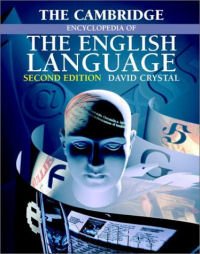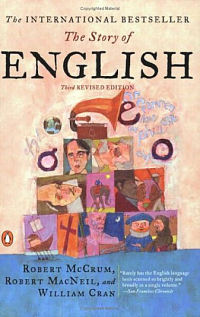
HOME
INTRO
SYMBOLS
ALMANAC
ECONOMY
GEOGRAPHY
STATE MAPS
PEOPLE
GOVERNMENT
FORUM
NEWS
COOL SCHOOLS
STATE QUIZ
STATE LINKS
BOOK STORE
MARKETPLACE
NETSTATE.STORE
NETSTATE.MALL
GUESTBOOK
CONTACT US
South Dakota Law

South Dakota State Language: English
The following information was excerpted from the South Dakota Codified Laws, 1itle 1, chapter 1-27, sections 1-27-20 through 1-27-26.
TITLE 1 STATE AFFAIRS AND GOVERNMENT
CHAPTER 1-27 PUBLIC RECORDS AND FILES
SECTIONS 1-27-20 - 127-26.
1-27-20. English as common language--Use in public records and public meetings. The common language of the state is English. The common language is designated as the language of any official public document or record and any official public meeting.
Source: SL 1995, ch 9, § 1
1-27-21. "Public document or record" defined--Public meeting. For the purposes of §§ 1-27-20 to 1-27-26, inclusive, an official public document or record is any document officially compiled, published, or recorded by the state including deeds, publicly probated wills, records of births, deaths, and marriages, and any other document or record required to be kept open for public inspection pursuant to chapter 1-27. An official public meeting is any meeting or proceeding required to be open to the public pursuant to chapter 1-25.
Source: SL 1995, ch 9, § 2
1-27-22. Application of English as common language requirement. The provisions of §§ 1-27-20 to 1-27-26, inclusive, do not apply:
(1) To instruction in foreign language courses;
(2) To instruction designed to aid students with limited English proficiency in a timely transition and integration into the general education system;
(3) To the conduct of international commerce, tourism, and sporting events;
(4) When deemed to interfere with needs of the justice system;
(5) When the public safety, health, or emergency services require the use of other languages. However, any such authorization for the use of a language other than the common language in printing informational materials or publications for general distribution must be approved in an open public meeting pursuant to chapter 1-25 by the governing board or authority of the relevant state or municipal entity and the decision shall be recorded in publicly available minutes;
(6) When expert testimony, witnesses, or speakers require a language other than the common language. However, for purposes of deliberation, decision making, or record keeping, the official version of such testimony or commentary shall be the officially translated English language version.
Source: SL 1995, ch 9, § 3
1-27-23. Costs of publication in other languages as separate budget line item. Pursuant to the exemptions outlined in § 1-27-22, all costs related to the preparation, translation, printing, and recording of documents, records, brochures, pamphlets, flyers, or other informational materials in languages other than the common language shall be delineated as a separate budget line item in the agency, departmental, or office budget.
Source: SL 1995, ch 9, § 4
1-27-24. Effect of common language requirement on state employment. No person may be denied employment with the state or any political subdivision of the state based solely upon that person's lack of facility in a foreign language, except where related to bona fide job needs reflected in the exemptions in § 1-27-22.
Source: SL 1995, ch 9, § 5
1-27-25. Common language requirements not applicable to private activities. Sections 1-27-20 to 1-27-26, inclusive, may not be construed in any way to infringe upon the rights of citizens under the State Constitution or the Constitution of the United States in the use of language in any private activity. No agency or officer of the state nor any political subdivision of the state may place any restrictions or requirements regarding language usage in any business operating in the private sector other than official documents, forms, submissions, or other communications directed to government agencies and officers, which communications shall be in the common language as recognized in §§ 1-27-20 to 1-27-26, inclusive.
Source: SL 1995, ch 9, § 6
1-27-26. Enforcement of common language requirements. Any citizen of the state has standing to bring an action against the state to enforce §§ 1-27-20 to 1-27-26, inclusive. The circuit court has jurisdiction to hear and decide any such action brought pursuant to §§ 1-27-20 to 1-27-26, inclusive.
Source: SL 1995, ch 9, § 7
Sources...
State of South Dakota. South Dakota Codified Laws . Pierre: State of South Dakota, 2011. Web. 24 Jun 2011. .
Shearer, Benjamin F. and Barbara S. State Names, Seals, Flags and Symbols: A Historical Guide Third Edition, Revised and Expanded. Westport, Conn: Greenwood Press, 3 Sub edition, 2001.
Additional Information
What are the origins of the English Language?: Merriam-Webster, Incorporated3.
A Brief History of English: by Dr. L. Kip Wheeler 1998-2014.
The History of English: How Englsih went from an obsure Germainic dialect to a global language, by Luke Mastin.
More symbols & emblems: Complete list of official South Dakota state symbols from NETSTATE.COM.

The English Language
by David Crystal
The Cambridge Encyclopedia of the English Language, by David Crystal. 506 pages. Cambridge University Press; 2 edition (August 4, 2003) The Cambridge Encyclopedia of the English Language is one of the publishing phenomena of recent times. Rarely has a book so packed with accurate and well researched factual information been so widely read and popularly acclaimed. This Second Edition now presents an overhaul of the subject for a new generation of language-lovers. The length of the book has increased by 16 pages and there are 44 new illustrations, extensive new material on world English and Internet English, and a complete updating of statistics, further reading suggestions and other references.

The Story of English
McCrum, MacNeil, and Cran
The Story of English: Third Revised Edition, by Robert McCrum, Robert MacNeil, William Cran. 496 pages. Penguin (Non-Classics); 3 edition (December 31, 2002) Originally paired with a major PBS miniseries, this book presents a stimulating and comprehensive record of spoken and written English-from its Anglo-Saxon origins some two thousand years ago to the present day, when English is the dominant language of commerce and culture with more than one billion English speakers around the world. From Cockney, Scouse, and Scots to Gulla, Singlish, Franglais, and the latest African American slang, this sweeping history of the English language is the essential introduction for anyone who wants to know more about our common tongue.
A History of the English Language, by Albert C. Baugh, Thomas Cable. 447 pages. Prentice Hall; 5 edition (November 19, 2001) For courses in the History of the English Language (English Composition). Comprehensive and balanced, this classic exploration of the history of the English language combines internal linguistic history and external cultural history--from the Middle Ages to the present. Students are encouraged to develop both an understanding of present-day English and an enlightened attitude toward questions affecting the language today.



